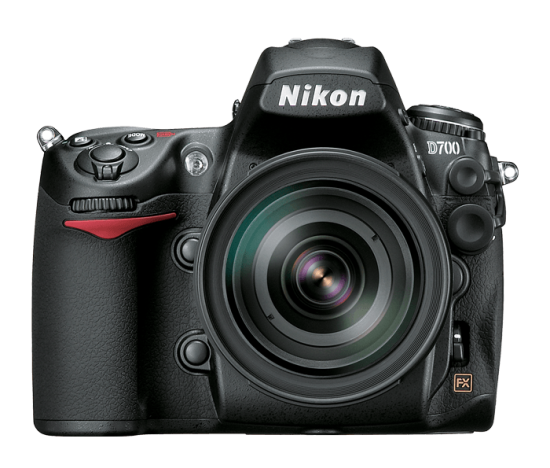
Nikon D700 vs D500 vs D850 vs Z6: 12MP 20MP 45MP 24MP. DOES IT MATTER with Nikon 105mm f1.4E ED lens
Table of contents
| 2:56 | Nikon Z6 |
| 4:37 | Nikon D850 |
| 5:59 | Nikon D500 |
| 7:18 | Nikon D700 |
| 8:47 | Comparisons |
| 13:17 | Share your thoughts |
| 13:58 | Don't forget to subscribe ;) |
- #commissionearned: Peter Zalums and QualiTube may earn commission at no extra cost to you
Hi, everybody. It's Peter Zalums' Griniflix - Adventure8, and welcome to another video. Today, I've got my Nikon Z6 out, and I'm using a rarely used lens, a Nikon NIKKOR 105mm, f/1.4E ED auto focus lens. I'm also using the FTZ adapter. There's no stabilization on this lens. The advantage of the Nikon Z6 is the in-body image stabilization. I've also got my Nikon D850. Now, I've taken the same lens out with the Nikon D500. I have here the final body that I'll shoot it on, which is the Nikon D700 body, so it's going to provide a bit of an interesting comparison, I guess, two things. One is to use the lens, which I haven't used much at all and really appreciate it for what it is, shooting wide open at f/1.4, 105mm, but also, what sort of image do you get with the different sensors?
The Nikon D700 is 12 megapixels only. That was considered to be equivalent to film in its day. The Nikon D500 is a crop sensor at 20 megapixels. The Nikon Z6 is 24 megapixels, and the Nikon D850, I think, is 45.7 megapixels. If you're viewing this on a computer or your phone, you won't see any difference. It's only when you zoom into 100% or even 200% that you'll notice a difference between the different sensor types. I'm expecting the quality of the shot to be fantastic in all of them with this lens. As I've said before in previous videos, the more you limit yourself with the type of equipment that you use, the more creativity you create. I believe that, so shooting just one focal length, I've been trying to shoot wide open f/1.4 in most cases and just adjusting the ISO and the shutter speed to suit to take full advantage of this lens, fully open f/1.4 to see what you get. You will no doubt see some photographs soon.

Meet the new standard by which all short telephoto lenses will be measured against, the world's first* full-frame 105mm with an f/1.4 aperture. A marvel of optical precision, distortion correction and craftsmanship.
Nikon Z6

Take a look at the shots I took with the Nikon Z6 from 2:56 to 4:31.

This is what a hybrid still and video mirrorless camera is meant to be. 24.5MP BSI sensor and high-speed shooting with the buffer capacity to match. 4K Ultra HD video at 60p*. Outstanding low-light capabilities.
Nikon D850

Take a look at the shots I took with the Nikon D850 from 4:37 to 5:51.
Nikon D500

Take a look at the shots I took with the Nikon D500 from 5:59 to 7:13.

The sleek and beautiful D500 goes anywhere you go, bringing along stunning resolution and performance. Packing a lot of power into a smaller camera body thanks to its DX sensor means you can take advantage of the smaller and lighter DX lenses in the NIKKOR line—and when you’re travelling, every ounce counts.
Nikon D700

Take a look at the shots I took with the Nikon D700 from 7:18 to 8:46.

Nikon's original 12.1-megapixel FX-format (23.9 x 36mm) CMOS sensor: Teamed with Nikon's exclusive EXPEED digital image processing, the D700 delivers breathtakingly rich image quality.
Comparisons
The Nikon Z6 handles this lens really well through the FTZ adapter. It's easy to focus. The electronic viewfinder worked well. I use the Z6 for my videoing mainly, and then occasionally, I go out and use it for stills. I have a lot of choice of cameras for stills, for street photography, like I tend to do when I tend to use most. It's light, so it doesn't add to the weight of the lens. The lens is quite heavy in its own and also quite sizable once you put on the lens hood. Otherwise, the handling was easy, and following the birds was easy. I think I prefer to use the live viewfinder of the D700, D500, and Nikon D850. Here, I have the same lens on the D850. It's a much heavier combination. The camera is quite heavy itself.
I do have an L-Mount on there as well, which makes it heavier, plus the lens, but nevertheless, you can quite easily put it to your eye, being f/1.4. It means that the viewfinder is so bright. It's basically the same brightness as if you're looking at the light source of your subject directly. When it comes to tracking birds, I found D500 to be the best. The D850 is the next best. With regards to the 3D tracking and being able to track the birds and take the shot, I actually ended up getting more shots in focus with the D500 and the D850 than I did with the Z6. I suspect the Z6 too, with animal tracking and everything, will probably be better again. The D500 is a nice, sturdy package. Everything just fits really well. It's easy to hold.
It's nice to hold with one hand, and to use it in high speed motor drive was also quite easy to use as well. The D500 is actually great for wildlife. I use it with my telephoto lenses just to get that extra reach. Being a crop sensor, it makes this 105mm to 157.5mm focal length lens at f/1.4. I did shoot all the photographs of birds at f/1.4, which meant there was a really narrow depth of field. Normally, I'm using other telephoto lenses and shooting at f/5.6, f/8.0, whatever, just to give that extra depth of field. Shooting at f/1.4 meant that all these cameras had to find the focus at f/1.4, so on a moving subject, I think it's actually done a pretty good job. You've seen that in the photographs. The D500 and the D850, I think, did the best job, followed by the Z6 and the D700, being an older camera, it's much slower.
The D700 has an L-Mount on as well, so it makes it a little bit bigger. It's a great camera to use. I love using my little D700. It's the same size as the D850 and probably the D500, just a little bit smaller. The Z6 is a lot smaller and a lot lighter. It's not as fast as the D850 or the D500 or the Z6, but it still did a reasonable job at tracking the birds. The 3D also worked pretty well, but it's a really robust camera. The key point of this video was the sensors or how it differs between all the different sensors, whether it be 12 megapixels for the D700, 20 for the D500, 24 for the Z6, or 45 for the D850. From the photos that you saw, did you see much difference at all? They were all cropped, and you can see that you actually get an outstanding result out of all of them.
Share your thoughts
Which camera do you feel that produced the best results? It was the same lens across all those bodies. Was there any noticeable difference from your perspective? I welcome your comments anyway. I hope you found that interesting. Do you have any of these cameras that I've just reviewed and are you planning to buy some of these? If it's the first time, if you're new to photography and you're looking to buy one of the older DSLR cameras, would you go for the D700? Are you still using F-Mount lenses from Nikon, or have you converted completely to mirrorless cameras? I welcome your comments.
Don't forget to subscribe ;)
I hope you found this video interesting. If you did, then please give it a thumbs up. I really appreciate it. If it's your first time to my channel, then please subscribe and enable notifications to be notified when the next video comes out. I really appreciate your support. I hope everyone is healthy in these challenging COVID days. I hope you're getting out about doing some exercise and staying fit and healthy. I look forward to seeing you in my next video, have fun, and stay healthy in the meantime. Cheers, bye!

Meet the new standard by which all short telephoto lenses will be measured against, the world's first* full-frame 105mm with an f/1.4 aperture. A marvel of optical precision, distortion correction and craftsmanship.

This is what a hybrid still and video mirrorless camera is meant to be. 24.5MP BSI sensor and high-speed shooting with the buffer capacity to match. 4K Ultra HD video at 60p*. Outstanding low-light capabilities.

The sleek and beautiful D500 goes anywhere you go, bringing along stunning resolution and performance. Packing a lot of power into a smaller camera body thanks to its DX sensor means you can take advantage of the smaller and lighter DX lenses in the NIKKOR line—and when you’re travelling, every ounce counts.

Nikon's original 12.1-megapixel FX-format (23.9 x 36mm) CMOS sensor: Teamed with Nikon's exclusive EXPEED digital image processing, the D700 delivers breathtakingly rich image quality.




About Peter Zalums
I am a passionate photographer and adventurer. I organise private tours for people who enjoying going off the beaten track, 4x4 outback Australia tours and worldwide motorcycle tours. Follow me on YouTube (GriniFlix), Instagram (Adventure8.com.au) and my websites, www.peterzalums.com and adventure8.com.au.